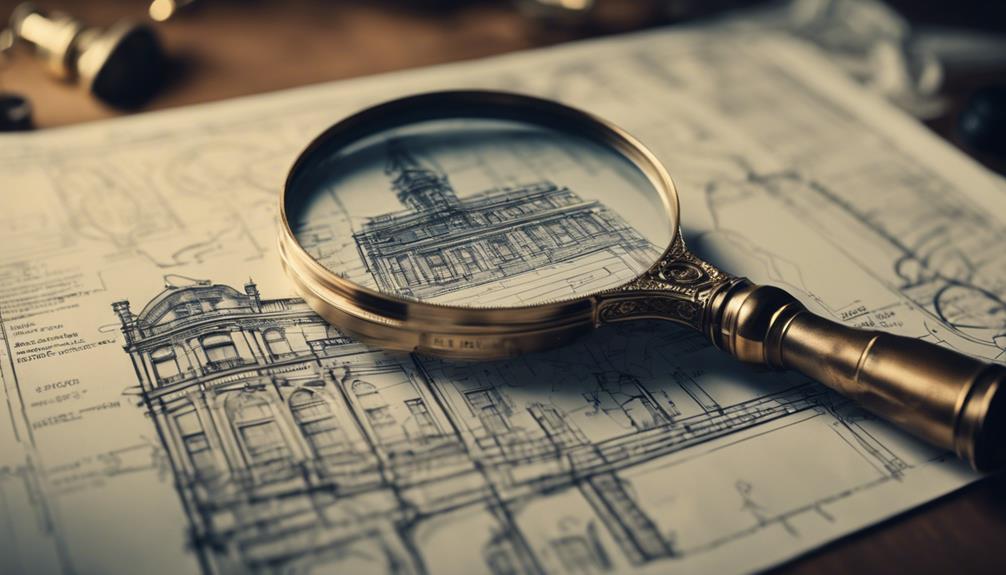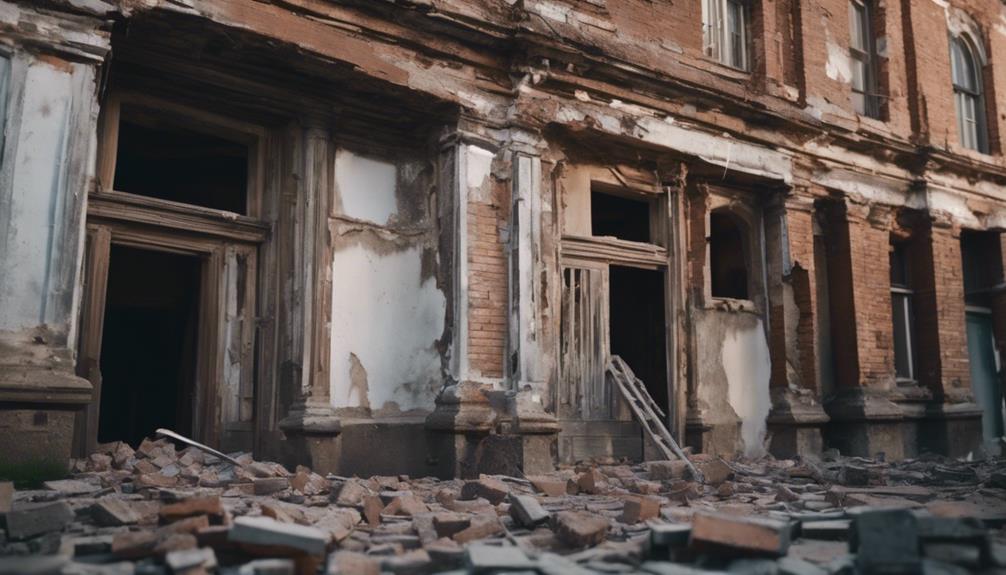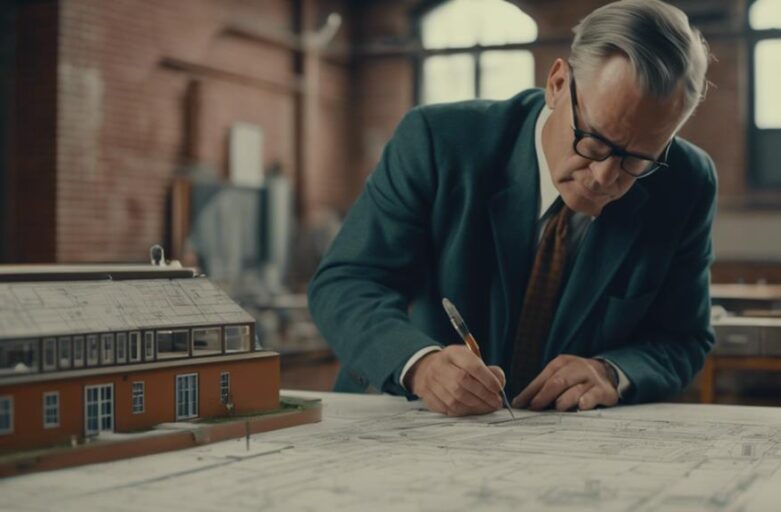Historic building professional standards are like a guidebook for taking care of old buildings. They are approved by an important person, the Secretary of the Interior, and follow special rules set by the National Historic Preservation Act and Section 106. These standards help you make smart choices about how to look after old structures, making sure all their special features, materials, and their historical importance are kept safe.
These rules cover building checks, finding and dealing with structural problems, and following preservation laws. It can be tough to balance old-timey rules with today's safety needs, but knowing these standards can make things easier.
Are you ready to learn the tips and tricks to help keep our shared history alive? Let's dive in.
Key Takeaways
The Historic Building Professional Standards are like the rulebook for taking care of old buildings. They are created by a big boss called the Secretary of the Interior. They help make sure our cool old buildings stay in great shape.
These rules mean that experts need to check out how strong the building is, what kind of design it has, and what it's made from. Keeping to these rules helps us save these old buildings and the stories they hold, which is pretty important to everyone.
There are also laws like the National Historic Preservation Act and something called Section 106 regulations that make sure people follow these rules.
These standards also help plan how to fix up old buildings in the future. They make sure we keep the old-timey charm, but also make it safe for us today.
Understanding Historic Building Standards
Learn about the rules for how old buildings should be treated. These rules are set by a big person called the Secretary of the Interior. They're essential for making sure our old buildings are taken care of correctly. They help to make sure everyone is on the same page, making smart choices, and keeping the public's trust.
These rules aren't just suggestions, they're like a map guiding how to look after our old properties. They make sure that as a professional, you know what to do.
These rules are like a light, showing the way for those who work to keep our shared past alive. They aren't needed for beginners, but they're very important for experienced professionals. These rules are required by two laws, Section 112 of the National Historic Preservation Act and Section 106 regulations, showing how important they are.
Following these rules isn't just about sticking to them, it's about doing the best we can. It helps the public trust us, keeps everything consistent, and encourages smart decisions. The rules are our promise to take care of our past and future. As you learn more, these rules become your guide, your own set of rules, your promise. Respect them, understand their importance, and let them guide your work in looking after old buildings.
Components of Professional Inspection
As a historic buildings inspector, you're like a superhero for old structures. Your job is to carefully look at how buildings are inspected and note any issues that may harm them. This isn't just about making sure rules are followed.
It's about making sure these amazing buildings continue to share their stories.
Inspection Scope and Methods
As an inspector, your job is like being a history detective. You look at old buildings to see how strong they are, how important they're historically, and what condition they're in. You follow rules set by the National Historic Preservation Act and the Interiors Professional Qualification Standards.
Your job is about more than just looking. You study interesting architectural features and test the materials they're made of. You also check the building's surroundings and write down everything you find.
You look at things like whether the building follows all the rules, what needs to be fixed, and what needs to be done to keep it preserved. You're like a protector of history, making sure the stories of these buildings don't get lost in time.
With your thorough reports and suggestions for how to keep the buildings preserved, you help make sure our shared history stays alive. You're a key part of a big story, keeping the past real and touchable.
Recognizing Structural Issues
When you're looking at an old building, it's really important to check for any problems that could make the building unsafe. This is a big part of keeping the building around for a long time. You need to look carefully at the walls, ceilings, floors, and things that hold the building up. Make sure you don't miss any signs of damage, like parts wearing out, water damage, or bugs.
Preservation Compliance Check
When you're given the job of a preservation compliance check, it's like being a history detective. You get to make sure old, important buildings are kept safe and cared for the right way. This means you have to understand the rules and guidelines that the Secretary of the Interior has set.
But your job is more than just making sure the building keeps its old look. You also have to make sure any changes still keep the building's historical feel while making it useful for today.
That's where a special program called the Federal Historic Preservation Tax Incentives comes in. This program sets the professional rules you have to follow. So, when you're doing a compliance check, you're not just checking a building. You're protecting a piece of history.
You're helping make sure our past stays alive in our future. And that makes you a very important part of the preservation community.
Importance of Preservation Principles
Get ready to dive into the exciting world of preservation principles. These are like a guide map for how we take care of old buildings.
But it's not just about saving old brickwork, it's about protecting our shared stories, beautiful designs, and important history.
It can be tough sometimes, but let's get ready to learn about how we can keep these standards high.
Principles Guiding Preservation
Preservation is like a game of careful balance. It's about keeping the look, feel, and structure of old buildings intact. Think of it like a rulebook that helps us take care of these buildings without ruining their historical charm. These rules aren't just some good advice, they're super important. Why? Because they help us keep the old-world charm of buildings alive.
Picture these rules as your guidebook and compass. They'll help you make the right choices so that these old buildings can be enjoyed by many more generations to come. But remember, it's not just about sticking to the rules. It's about respecting and taking care of what's been handed down to us.
When you're taking care of an old building, you're not just looking after bricks and mortar. You're protecting a part of our shared history. So, let's cherish this role and do it right!
Challenges in Preservation
Taking care of old buildings isn't just about keeping them clean. It's a tough job where you have to juggle what people need today with preserving the building's historic charm. This isn't always easy. You have to make choices that keep the building's old character while making it useful for today.
The hard part? Making sure modern needs don't erase the building's old soul. But when you get it right, the building's value might go up, and people in the community will feel proud. It's not just about keeping a building safe, but also about saving the stories and history it holds.
After all, each time you tackle a challenge, you're not just taking care of a building. You're protecting a part of our past.
Technical Aspects in Inspection

When we talk about checking out old buildings, it's like going on a treasure hunt. We're looking for clues about what life was like when the building was made. Each part of the building, whether it be the wood, the stones, or the metal, is like a page in a history book. They tell us a lot about the time they were made and how good the builders were.
Our job isn't just to see if the building is still strong. We're also trying to understand the story of the building. Each detail and the way it was built is a puzzle piece. It's a big job that needs a lot of knowledge about old buildings and how they were built. We're like the protectors of these buildings, looking after their past and their future.
It's really important to write down everything we find out. This helps us to make plans to keep the buildings safe and make sure they last for a long time. This way, the buildings can keep telling their stories to many more people.
In the world of old building check-ups, it's not just about the materials used. It's about seeing the skill, the hard work, and the history that's a part of each building. It's about being part of a team that helps to keep history alive.
Role of Federal and Local Agencies
When you dive into the fascinating topic of saving old buildings, it's super important to know that both national and local groups have a big job to do. They use a special set of rules, called the Secretary of the Interior's Professional Qualification Standards, to guide all their work on preserving old buildings. These groups make sure that old, special buildings are protected and that anyone working on them knows what they're doing.
When state and local leaders have to look at plans for fixing up historic buildings, they refer to these rules. The rules are like a clear path, making sure the work done on the buildings matches the Guidelines for Preserving, Rehabilitating, Restoring, and Reconstructing Historic Buildings. Groups that look after historic areas and plan for their future also use these rules when they're checking designs for old buildings.
These rules are super important – they're not just ideas, they're the heart of all the work to save old buildings. Following them means the work done on historic buildings is trustworthy, regular, and high-quality. These rules help make decisions about changes to old buildings, and help carry out Section 106 regulations.
Challenges in Historic Building Inspection

Inspecting old, historic buildings isn't simple or easy. These aren't just any old buildings – they're valuable pieces of our past, like a treasure chest full of history.
One big challenge is finding hidden problems. Just like rust can secretly damage a bike over time, age and decay can harm these buildings without us seeing it. Plus, some parts of these big, grand buildings are hard to reach, which makes it tough to follow all the rules about how to fix up old buildings.
Another tough part is that we often don't have enough information about how the building looked when it was first built. Without that, figuring out what's original and what's not during an inspection can feel like a guessing game.
Then there's the issue of the rules for fixing up old buildings sometimes not matching up with modern safety rules. It's like trying to fit a square peg into a round hole – making sure the building is safe without ruining what makes it historic is really hard.
Conclusion
Understanding and caring for old buildings is a big job, and it's one that requires special professional standards. This means knowing everything about the building, from the materials it's made of, to the history it carries.
Also, government agencies at different levels help out, even though it can be tough. Each old building is like a treasure from the past. And it's up to us to look after them properly.
This way, we can make sure the stories of the past are kept safe for future kids to learn about and enjoy.


